See the New Times Square New Year's Eve Ball Up Close
Find out how you can take home a piece of the old New Year's Eve ball!


The facade of the Metropolitan Museum of Art is one of the most impressive entrances in New York City, but it is actually unfinished. Designed by Richard Morris Hunt and deemed complete in 1902, there are decorative elements of the design that were never realized (and the museum keeps expanding). Piles of blocks that top the museum’s corinthian columns were meant to be carved into sculptures and the niches in between the columns were meant to house sculptures. This month, the Museum revealed a new annual commission that will fill in those niches for the first time. The debut installation, on view now, is The NewOnes, will free Us by Kenyan artist Wangechi Mutu.
The four sculptures by Mutu mark the first-ever display of art in the sculptural niches in the 117-year history of the Beaux-Arts museum. Artwork displayed in the niches will be contemporary commissions, new works that establish a dialogue between the artist’s practice, The Met collection, the physical museum, and The Met’s audiences.
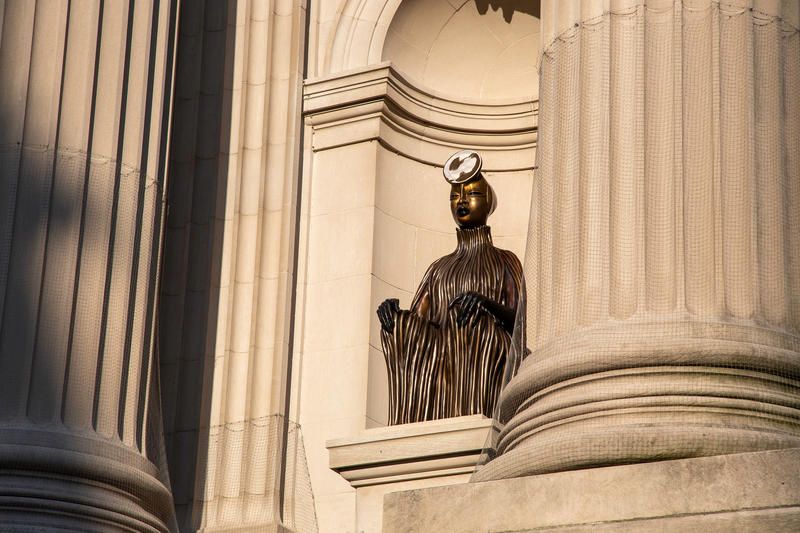
The Metropolitan Museum of Art, Photo by Bruce Schwarz
For the debut installation, Mutu has created four individual sculptures named The Seated I, II, III, and IV. The sculptures make a statement on gender and racial politics, a common thread throughout all of her work. In The NewOnes, Mutu melds both Western and African art. With her bronze sculptures, Mutu puts a feminist twist on the common architectural motif of a caryatid, a sculpted female figure meant to serve as a means of either structural or metaphorical support. Rather than bearing a load, Mutu frees her caryatids of their burden and secondary status. Furthermore, she does so in the context of a neo-classical façade whose original architects sought to convey a far more conservative set of values.
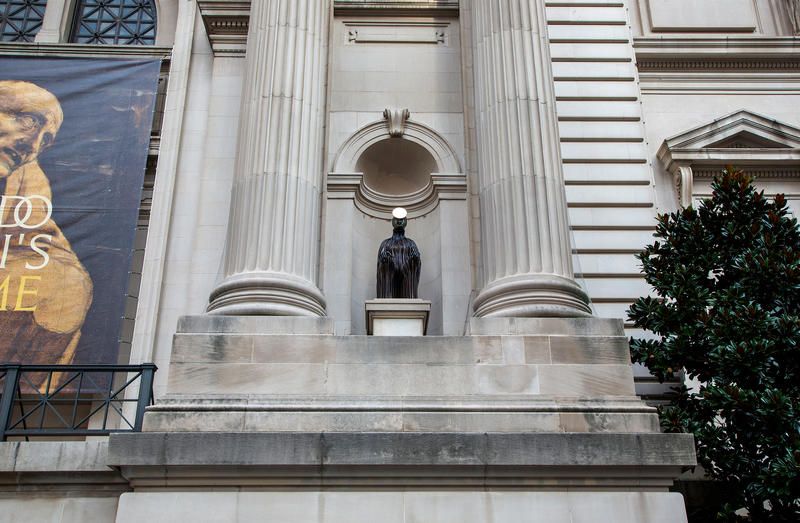
The Metropolitan Museum of Art, Photo by Bruce Schwarz
Each figure is unique, with individualized hands, facial features, ornamentation, and patina. Mutu drew inspiration from customs practiced by specific groups of high-ranking African women for the embellishments. The horizontal and vertical coils that wrap around the figures’ bodies reference beaded bodices and circular necklaces, while the polished discs set into different parts of the sculptures’ heads allude to lip plates. The result of this blending of traditional and unconventional aesthetics leads to the creation of otherworldly figures.
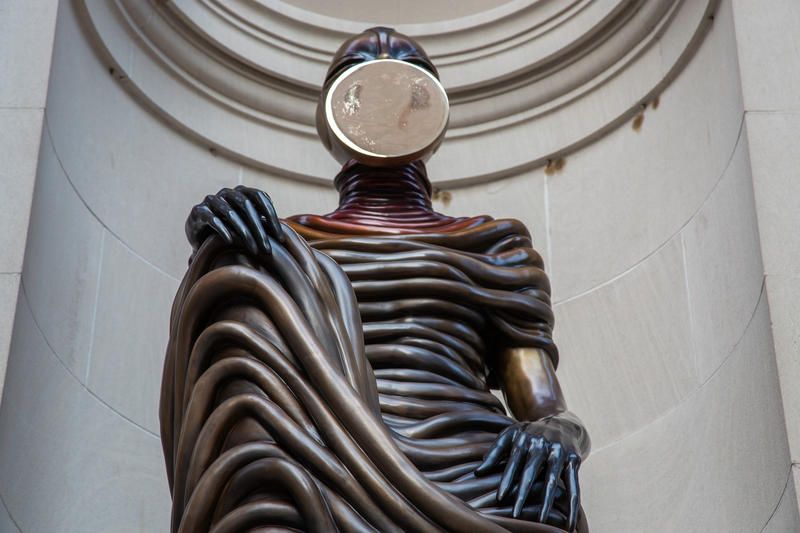
The Metropolitan Museum of Art, Photo by Bruce Schwarz
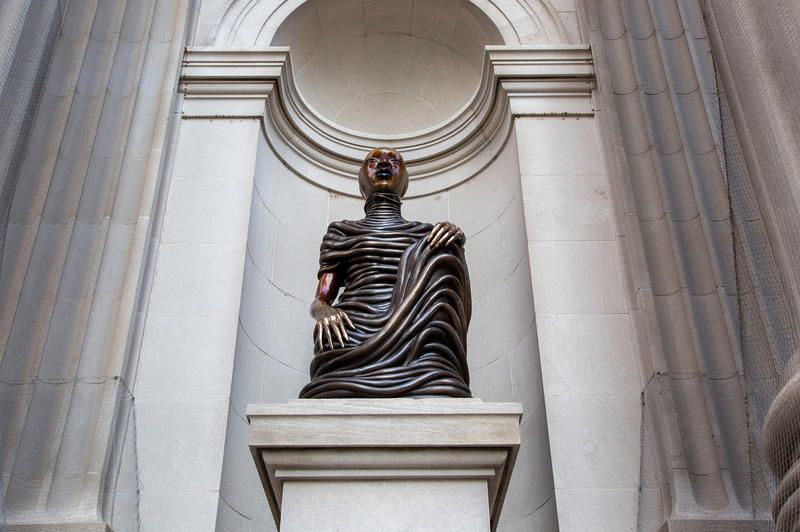
The Metropolitan Museum of Art, Photo by Bruce Schwarz
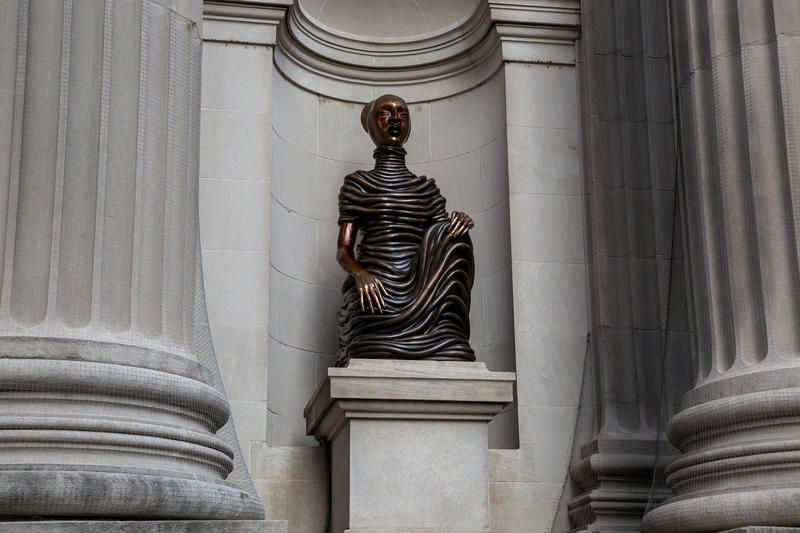
The Metropolitan Museum of Art, Photo by Bruce Schwarz
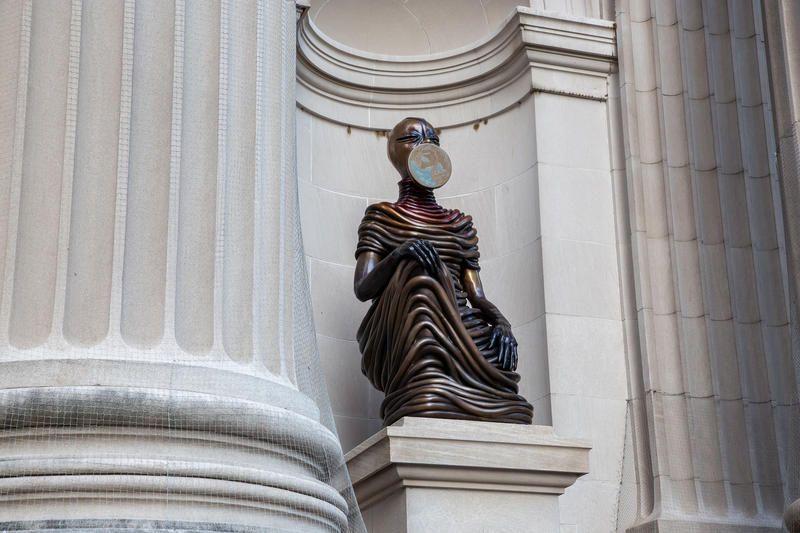
The Metropolitan Museum of Art, Photo by Bruce Schwarz
“The Met’s new series of contemporary commissions offers important opportunities for the Museum to engage with artists, and to generate dynamic forms of dialogue between our collection, building, and audiences,” said Max Hollein, Director of The Met. The debut installation will be on view through January 12, 2020.
Next, check out The Top 10 Secrets of the Metropolitan Museum of Art
Subscribe to our newsletter